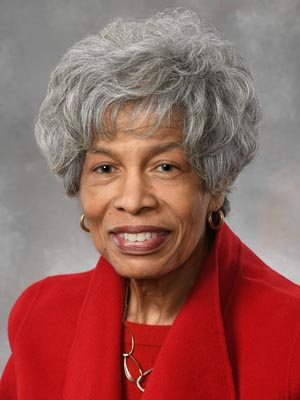
by Katherine Tyler Scott
- 17 May 2023
Share:
The integration of self and system is a healthy practice for any leader; and it is essential for those called to lead through a period of turbulence in which societal regression and the eruption of collective shadow is a reality. The potential to divide and destroy is evident; the potential to transform has not yet been fully realized.
Connie Zweig and Jeremiah Abrams (1991) describe the collective shadow in Meeting the Shadow and the form it can take as mass phenomena. They write, “In the case of collective shadow, this can mean that people identify with an ideology or leader that gives expression to the fears and inferiorities of the entire society. Often this takes form collectively as fanatical fascinations such as religious persecution, racial bigotry, caste systems, scapegoating, witch-hunting, or genocidal hatred” (p. 167).
As we emerge from a global health crisis, we see evidence of the adverse effects of shadow in an epidemic of regression, fear, insecurity, isolation, loneliness, and crippling anxiety. The consequences are evident in unwarranted violence perpetrated on random victims, the decline in trust in institutions, the proliferation of fabrications and distortions of truth, a rise in autocratic leadership, the resurgence of White supremacy, efforts to destroy democracy, a rise in racism, antisemitism, and blatant misogyny.
We are in the grip of collective shadow; and how we have traditionally understood and practiced leadership needs reimagination if we are to respond to these problems.
How to respond responsibly in this age is the most challenging leadership work of our time. It includes vigorously questioning our intellectual assumptions and constructs, reexamining our personal and professional identities, and critiquing our core beliefs and mental models that have long shaped our perceptions and work. It means letting go of proprietary attitudes about long held ideas and entrenched methods of practice. It requires a multidisciplinary, multimodal approach that equips leaders with the temperament and capacities necessary to lead in the grip of shadow.
Pioneers in the fields of social psychology, psychiatry, religion, sociology, mythology, and systems theory (i.e., Murray Bowen, Carl Rogers, Kurt Lewin, Edwin Friedman, Marie Von Frantz, Joseph Campbell, and William Bridges) can contribute significantly to the leadership task of our time — that of developing an integrated approach inclusive of the self and the system. This is central to changing the pedagogy and reforming leadership education.
Reformation is a time of dramatic change. Change is an inevitable induction into separation from the past and our current reality into an in-between time — a time of preparation for a “new way” of seeing and being. It is an erratic, disruptive, destabilizing, and bewildering journey; it is also inspiring, creative, hopeful, and ultimately transformational. Inherent in the change process is an emerging map of possibilities and an encounter with a range of emotions that must be acknowledged and managed if transformation is to happen. Thus change requires a deep level of self-awareness and a knowledge of how systems operate; both are essential for success in leading from the known into the unknown.
Leadership experts have explored and written voluminously about self and system, yet it is rare to find examples of them being taught or practiced in an integrated manner. Finding ways to hold the seeming opposites together is the urgent task of our time — a time of social disintegration and shadow. The disconnect between values and actions, the incongruence between words and deeds, the abyss between needs and solutions, are the spaces to which leadership is being called — spaces where rethinking and relearning are the catalysts for creating a culture of transformation.
Leadership experts have explored and written voluminously about self and system, yet it is rare to find examples of them being taught or practiced in an integrated manner.
To address these disconnects while leading in a time of transition requires the ability to withstand the social pressure that will often conflict with what is known to be right, just, and true. It requires self-awareness, respectful listening and responses to differences, patience, and the will to derive well-reasoned conclusions rather than capitulating to the will of a group. The capacity to recognize and avoid relational binds and emotional triangles is another effective leadership characteristic that emanates from a kind of confidence and courage gained only from engaging in inner work. An ability to recognize what “hooks” you and others emotionally, reduces debilitating anxiety and reactivity in a system.
Knowing what internal and external factors contribute to individual and system behavior equips leaders with the capacity to set clear boundaries and differentiate their behavior and influence from that of others. This is key to the mental health of leaders and is ultimately beneficial to the healthy functioning of a system. Transition is not linear; realistic expectations and understanding the tensions inherent in the system maximizes the ability of leaders to endure the dynamics of change and persevere through periods of regression.
Creating a culture in which individuals are accepted and valued in the system engenders trust and sanctions individual and organizational authenticity. When differing perspectives can be expressed without fear of judgment or retribution, it is an antidote to “group think” and the buildup of the negative effects of shadow. This helps to cultivate a culture of trusteeship, one where members are stewards of the vision and values of the system as they explore the need for change. Shared values in the system are guardrails of organizational integrity and are a framework for the unique ways they can be implemented.
Free floating anxiety is especially contagious, and, when chronic, it is corrosive to healthy communication, relationships, and trust. Over time, it undermines efficacy of individuals and thwarts the mature development of the organization. Innovation and creativity in resolving problems is diminished. Leaders of successful transitions are a non-anxious presence in anxious systems. If the leader can remain calm, clear, and centered amidst the confusion and chaos, the caustic effects of anxiety are reduced, and the energy needed for problem-solving released.
In times of crisis, the need for immediate action and control over the situation is usually appropriate and understandable. Long term, it is the leaders’ ability to take time to reflect and not feel the compulsion for the quick fix, to “do something!” that will solve problems. A reflection from The Center for Action and Contemplation describes what can work:
“We must resist looking to the frameworks of the past to lead us into the future. Doing so is a way to pretend to control, to tighten our grip and reduce our cultural aerodynamic flexibility. Instead, perhaps we turn to ways of wisdom that cultivate intuition, patience, and ingenuity. We embrace the ways of… one who purposefully gets lost in order to chart new ways forward. By getting lost and welcoming the reality that we do not have the answers or know the way forward, we enter a space of liminality and emergence. We are not attempting to fix ‘broken systems’ but are, instead, summoning entirely new worlds… We do not have the answers today. We have the wondering” (Rorh, 2023).
We don’t have the answers. We have the wondering. And, with the International Leadership Association, we have a global membership with the intellectual curiosity, capacity, and commitment needed to tackle the disturbing reality in which we find ourselves. In connecting self-development with the system, we will live the questions long enough to find our way into an enlightened and better reality.
Resources
Friedman, E.H. (2017). A Failure of Nerve: Leadership in the Age of the Quick Fix, 10 Year Anniversary, Revised Edition. Church Publishing, Inc.
Rohr, R. (2023, May 5). Transitions: Fly Loose. The Daily Mediations. Center for Action and Contemplation. https://cac.org/daily-meditations/fly-loose-2023-05-05/
Tyler Scott, K. (2007). The Integrated Work of the Leader. Ki ThoughtBridge.
Zweig, C., & Abrams, J., Eds. (1991). Introduction to Part 7. Meeting the Shadow: The Hidden Power of the Dark Side of Human Nature.

Before becoming Principle of Ki ThoughtBridge, LLC Katherine Tyler Scott developed and directed several statewide and national leadership education programs. She has consulted with and trained thousands of leaders, written numerous articles, developed curricula and co-authored books on organizational change and development, conflict resolution change management and leadership.
Katherine is founder of Trustee Leadership Development, Inc. a national organization that worked with governance and executive leaders of not-for-profits; and the Lilly Endowment Leadership Education Program a training program for fellows committed to transformational systemic change. Among her multiple awards is being named Sagamore of the Wabash the highest honor bestowed by the Governor of Indiana in recognition of her leadership and service.
Katherine was a convener of the ILA Applied Leadership global learning community and served as ILA Board Vice-Chair and Chair.


